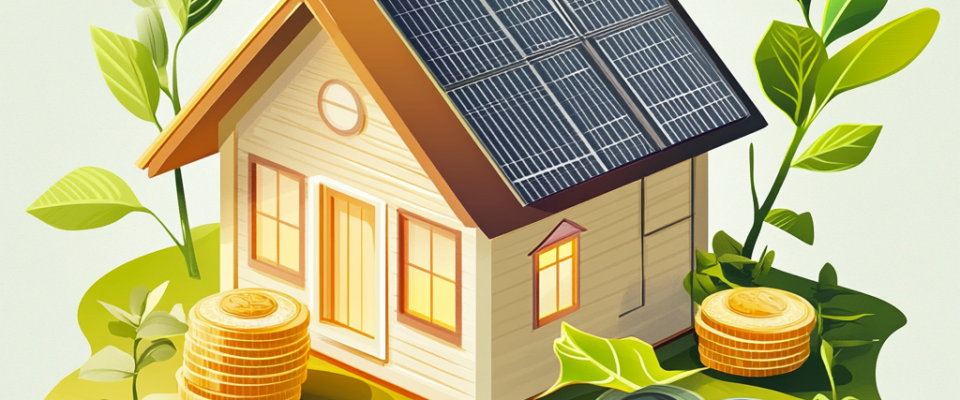- Basic principles of green building
- Eco-friendly building materials: types and characteristics
- Insulation materials from renewable sources
- Stable and environmentally friendly finishing materials
- Alternative materials for construction and finishing
- Advantages and prospects for using green building materials
- Questions and answers
Basic principles of green building
Green construction is based on the principles of sustainable development and minimizing negative impacts on the environment. This includes the use of environmentally friendly and renewable resources, as well as technologies that promote energy efficiency and conservation of natural resources. The main goal is to create comfortable and healthy living conditions while reducing carbon footprint and energy consumption.
In addition, green building actively introduces practices of recycling and reuse of materials, which reduces the amount of construction waste. An important part of this approach is the planning and design of buildings taking into account their full life cycle, from the selection of building materials to their disposal. Thus, green building strives to create buildings that are not only environmentally friendly during use, but also at the end of their life cycle.
Eco-friendly building materials: types and characteristics
Green building materials are materials produced with minimal environmental impact and low carbon emissions. They can be natural or recycled and include materials such as wood, bamboo, recycled metal and concrete with recycled components added. These materials often have high thermal insulation and acoustic properties, which makes them attractive for use in the construction of energy-efficient buildings.
A key characteristic of environmentally friendly materials is their ability to biodegrade or be easily recycled. This helps reduce waste and reduce the burden on landfills. Additionally, materials such as hemp and linen insulation have natural antibacterial and antimicrobial properties, which help create healthier indoor environments.
Insulation materials from renewable sources
Using insulation materials from renewable sources is an important aspect of green building. These materials, such as sheep’s wool, hemp, cellulose and wood fiber, have excellent insulating properties, helping to significantly reduce energy costs for heating and cooling buildings. Their use also improves indoor air quality because they do not emit harmful chemicals.
An important advantage of such materials is their renewability and biodegradability. This allows us to minimize the impact on the environment and reduce the amount of construction waste. In addition, insulation materials from natural sources have good sound insulation properties, which increases living comfort.
Stable and environmentally friendly finishing materials
Finishing materials play an important role in creating the interior atmosphere of a building, and their choice must also take environmental aspects into account. Eco-friendly finishing materials include natural paints, lime-based plasters, wood, bamboo and stone. These materials contain no toxic substances, making them safe for the health of occupants and minimizing emissions of volatile organic compounds (VOCs).
In addition, materials such as thermal diffusion wood or bamboo are characterized by high durability and resistance to external influences. This reduces the need for frequent repairs and replacements, which in turn reduces the environmental footprint. Natural materials also have unique aesthetic properties that can add warmth and coziness to an interior, highlighting the natural beauty of natural elements.
Alternative materials for construction and finishing
In recent years, more and more attention has been paid to alternative materials that are not only environmentally friendly, but also innovative. Such materials include adobe mixture, straw blocks and geopolymers. Mud walls, for example, have excellent thermal insulation and acoustic properties, as well as high thermal capacity, which helps regulate indoor temperatures.
Straw bales are another example of a sustainable material that has low thermal conductivity and high biodegradability. They can be used as the main structural material or as insulation. Geopolymers, in turn, represent a promising replacement for traditional cementitious materials, as they are produced using recycled waste and have high strength and durability.
Advantages and prospects for using green building materials
Green building materials are becoming increasingly popular due to their environmental and economic benefits. Their use helps create more sustainable and healthy buildings, and promotes the development of technologies and construction methods that minimize the negative impact on the environment.
- Environmental benefits: Green materials are often produced using renewable resources and technologies that reduce carbon emissions. This helps reduce our ecological footprint and protect ecosystems.
- Energy efficiency: Many green materials have high thermal insulation properties, which can significantly reduce energy consumption for heating and cooling buildings. This not only reduces operating costs, but also reduces the load on energy systems.
- Health and Comfort: Green building materials are often free of toxic substances such as volatile organic compounds (VOCs), helping to create healthier indoor environments. This is especially important for buildings intended for living and working, where air quality is of great importance.
- Durability and low maintenance: Eco-friendly materials such as recycled wood or bamboo are highly durable and resistant to the elements. This reduces the need for frequent repairs and replacements, saving resources and money.
- Supporting the local economy: Using green materials, especially those produced locally, contributes to the development of local communities and reduces transportation costs. This not only supports the local economy, but also reduces the carbon footprint associated with transporting materials.
Green building materials represent an important trend in the construction industry, contributing to the creation of more sustainable, healthy and cost-effective buildings. As technology advances and environmental awareness grows, their use will continue to expand, opening up new opportunities for environmentally conscious builders and consumers.
Questions and answers
Answer 1: Sustainable development, minimizing environmental impact and using environmentally friendly resources.
Answer 2: Materials produced with minimal environmental impact, including natural and recycled materials.
Answer 3: They have excellent thermal insulation properties and biodegradability.
Answer 4: No toxic substances and low VOC emissions.
Answer 5: These are materials such as adobe mixture and straw blocks that have environmental and innovative characteristics.

